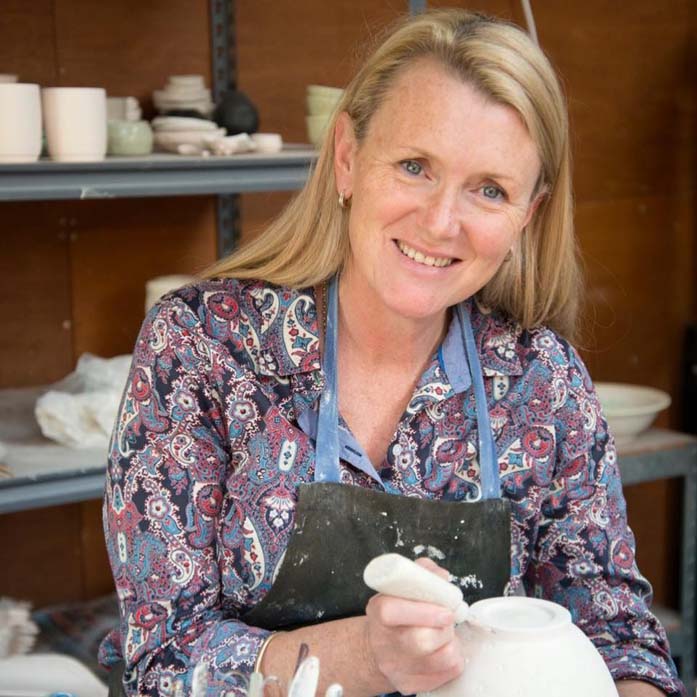
Mount Eliza ceramic artist, Natalie Heriot, loves the feel of clay. She loves what it can do, the sense of permanence and its functionality. Working with clay is also therapeutic. “It’s such a relaxing thing to do, like meditation or yoga. There’s no room for thinking, just working. You’re too busy coordinating your hands,” she explains.
While she also uses the handbuilding technique, Natalie has always been drawn to the potter’s wheel because it’s such a hard skill to master, but deeply satisfying to get right. Also it’s quick and she can dictate to the clay. The hardest part is judging when to stop. A piece can be overworked and that’s problematic.
Clay has memory. Once it goes into the kiln, it can revert to a mistake in the building process. On the other hand, before firing, clay can be reclaimed endlessly. It just goes back into the bucket with water to be used again later. There is virtually no waste in ceramics. Even broken pots can be used in the garden for drainage.
There are many steps to working with ceramics from sourcing and prepping the clay to firing and the tricky science of glazing. For Natalie, it’s all a pleasure. She just loves the making. “You’re so in tune with the process. It’s amazing how much your fingers interpret to the brain,” she says.
Natalie feels that a great ceramic piece has to be balanced. If it’s a functional piece, it needs to be user-friendly and light. Its weight should match its look and its purpose. Most importantly, it needs to have some character to it. “I’m not a production potter. A piece needs to have the maker’s personality reflected in the work,” she says.
She also learns a lot from teaching by realising why she does things the way she does them. Natalie teaches students one-on-one or two-to-one in her purpose-built home studio. On her wishlist for the future is having a dedicated space outside of the home for teaching. There are very few places to learn ceramics, yet there has been a resurgence of interest.
Outside of the satisfaction of making, art is therapy. There is no denying the emotional benefits of creativity. Natalie understands this intimately; for her, working with ceramics helped her to escape from two difficult relationships.
While she enjoyed her education in ceramics and arts in high school, she decided on a career in nursing. She knew it would provide a steady and reliable stream of income while providing independence and flexibility, but she continued her ceramics work as well, completing a Diploma in Ceramics at Holmesglen Institute.
When she ended her relationships, she had both skills to rely on.
Natalie raised all four of her children on her own from the time the youngest was 18 months old and the others were 3, 6 and 9. She worked night shifts and her mother stayed for the nights while Natalie was at work. She never missed meals, school drop off and pick ups, bedtime, or taking the children to activities. Through all of it, she continued working with ceramics.
Now her children are grown, she has more time for creativity. In fact, she has taken this year off from work to dedicate time exclusively to her art. She’ll be travelling to Korea later in the year to take a ceramics masterclass.
Living and working on the Peninsula provides a constant source of inspiration. She loves walking the beach collecting bits and pieces to incorporate into her work. She loves the colours and the textures she finds. She wants her work to reflect the relaxed lifestyle of the Peninsula and look like something found in a beach house.
In the future, she’d really like to partner with a local restaurant to create bespoke dinnerware for them. Her pieces are restaurant quality and safe for both microwave and dishwasher. In the meantime, you can inspect what she makes at local markets and arts shows, Oz Art in Frankston, and on Instagram and facebook.
